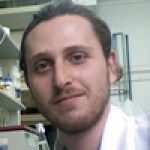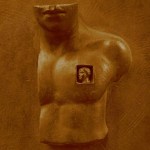Embryonic development
Dr. Gabriele D'Uva is finishing up his postdoctoral research at the Weizmann Institute. Here is his account of three years of highly successful research on regenerating heart cells after injury. Among other things, it is the story of the way that different ideas from vastly different research areas can, over the dinner table or in casual conversation, provide the inspiration for outstanding research:
Three years ago, when I joined the lab of Prof. Eldad Tzahor, the emerging field of cardiac regeneration was totally obscure to me. My scientific track at that time was mainly focused on normal…
A new book will make you stop and think about the relationship between the microscopic world and the one we pass by every day.
Life’s Blueprint – The Science and Art of Embryo Creation; Benny Shilo, Yale University Press, 174 pages.
Stem cells and their niche
When a stem cell divides, one daughter maintains the stem cell fate while the other produces a differentiated progeny. Stem cells are positioned in a restricted spatial niche that provides signals maintaining them in a proliferative, nondifferentiated state. After division, only the undifferentiated progeny is retained in the niche.…
Does your face reveal what’s in your heart? It might – even more than you know. Take, for instance, a common group of birth defects – forms of a disorder called DiGeorge syndrome. Around one in 4000 is born with this syndrome, which arises from a deletion of a short segment of chromosome 22. Among other problems, this deletion nearly always involves deformations in both the face and the heart.
Sculpture: Igor Mitoraj
The Institute’s Prof. Eldad Tzahor had already shown that face and heart go together: Very early on in the developing embryo, the progenitor cells that will…


